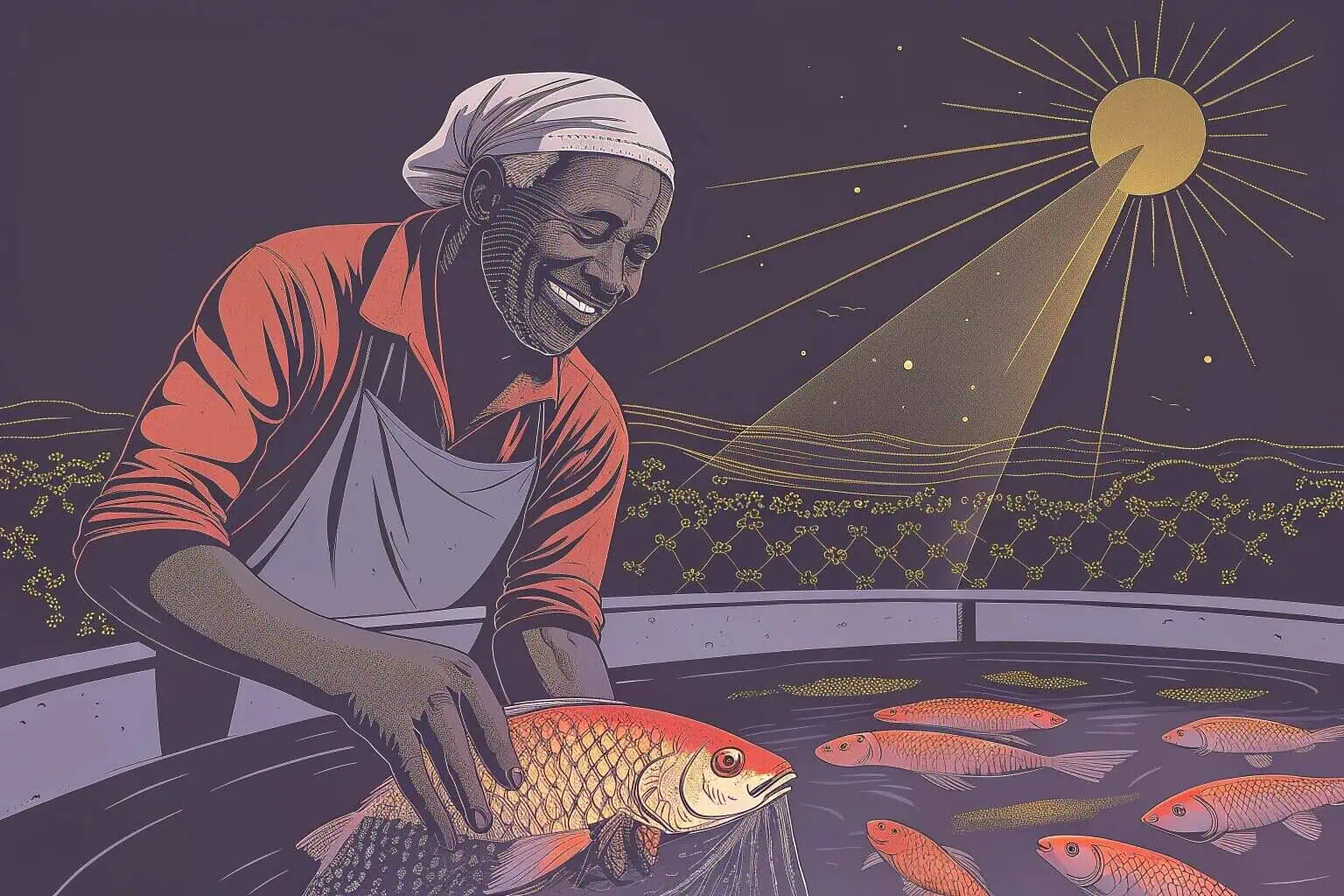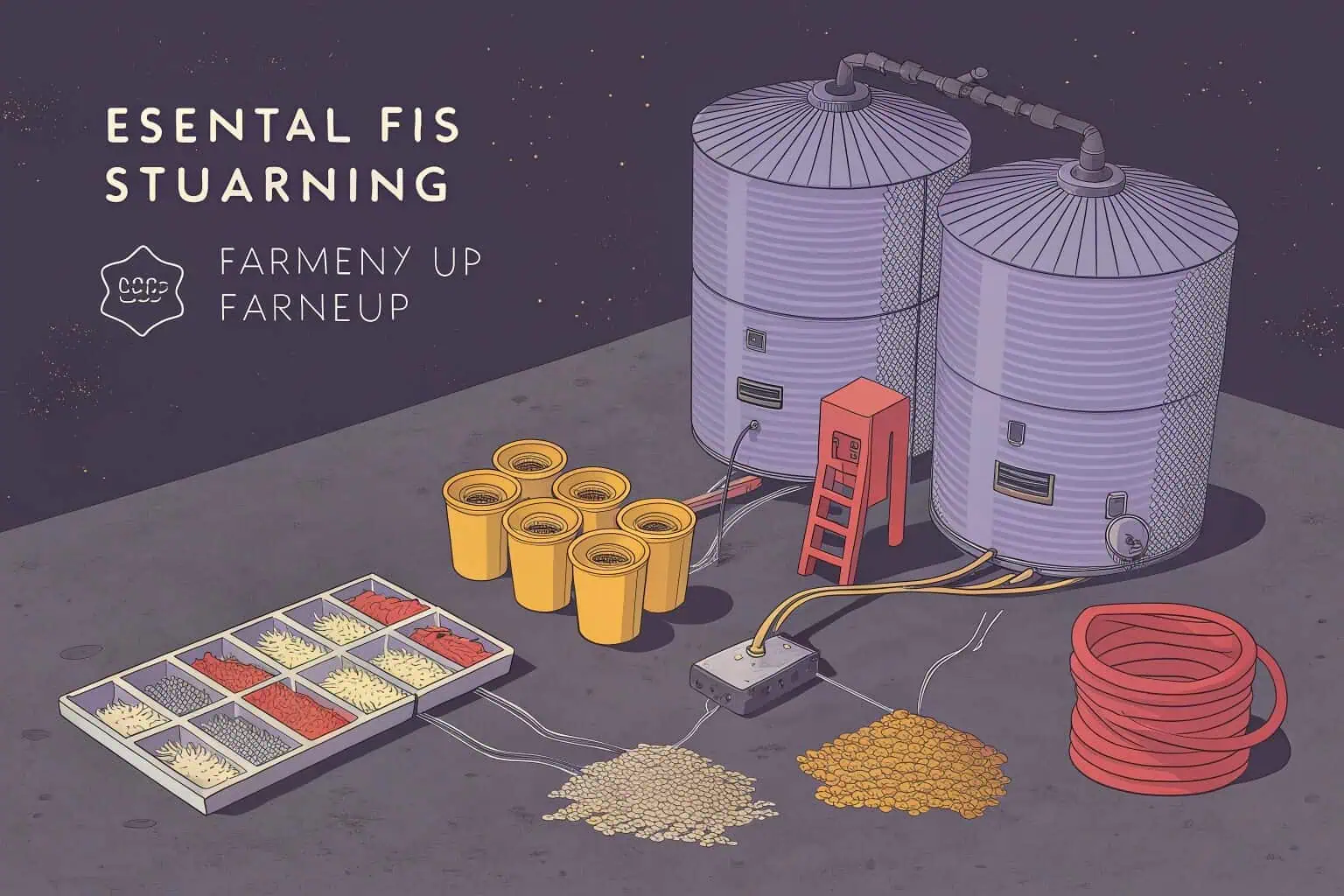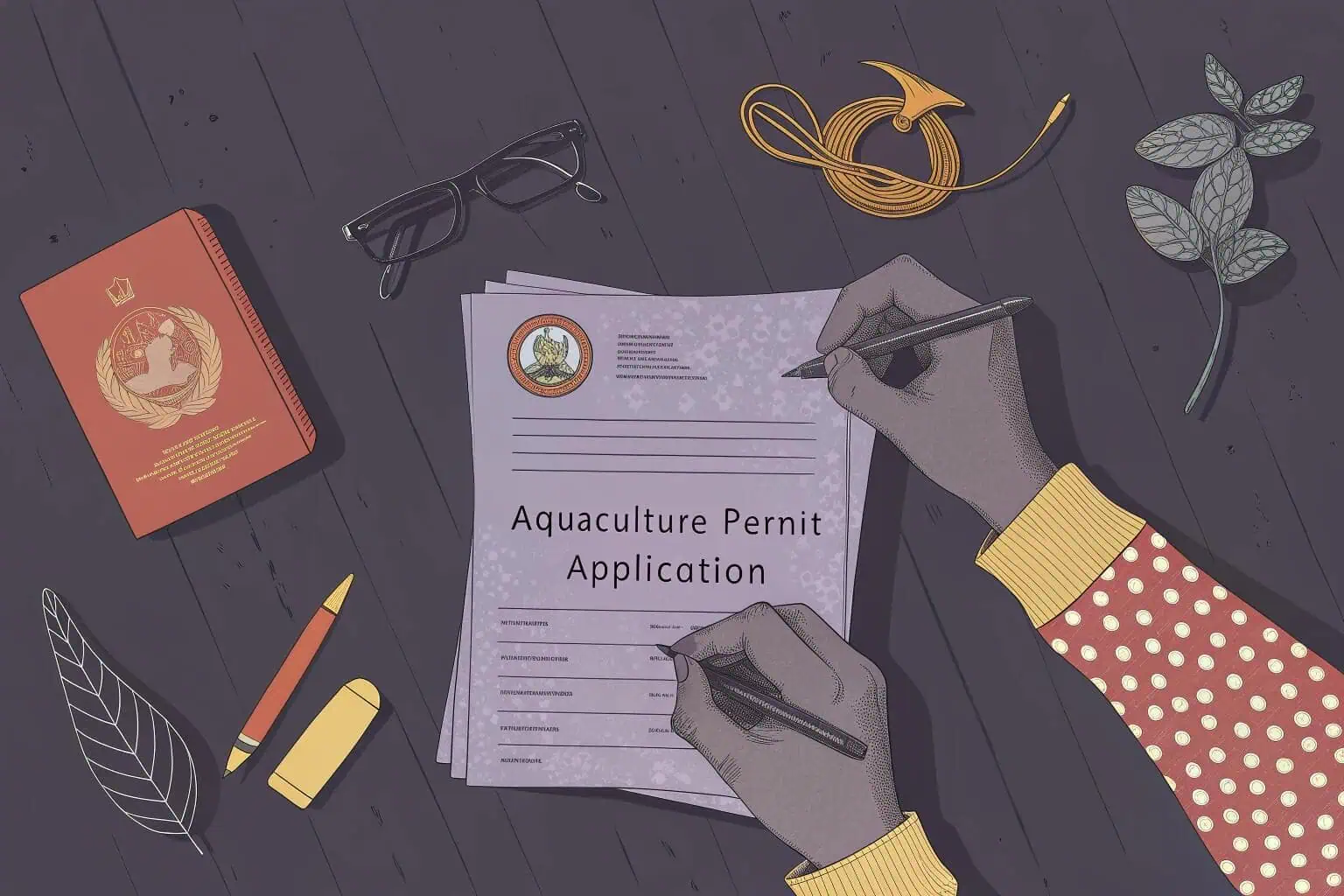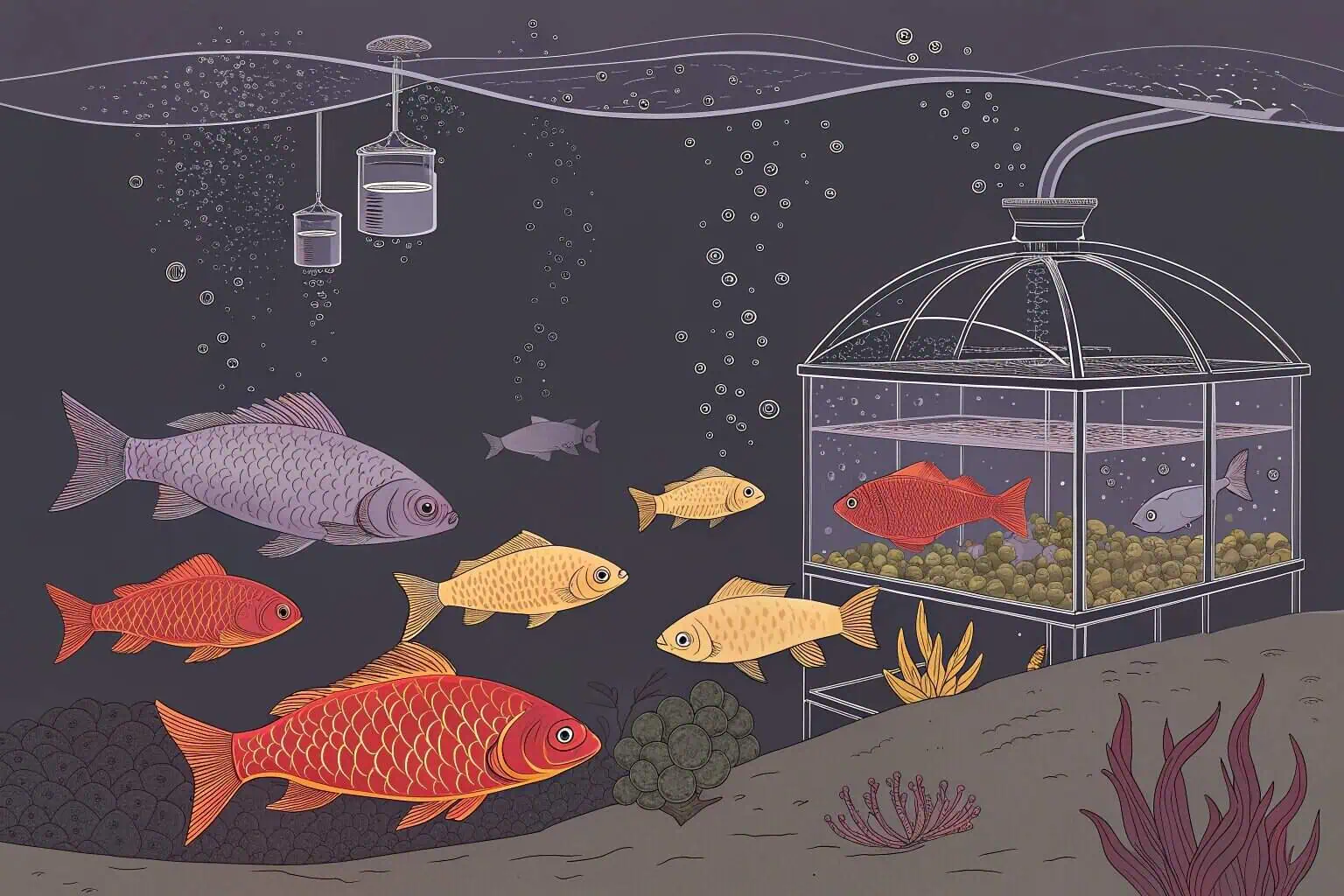How to Start Fish Farming in South Africa?
Struggling with a new venture idea? Fish farming in South Africa offers a growing market. But where do you begin with the complexities of aquaculture?
Fish farming in South Africa can be a rewarding venture if planned carefully. It involves understanding costs, licensing, suitable fish species, and market dynamics. Success depends on thorough research and a solid business plan.

Starting any new business, especially in agriculture, feels like a big step. I've been in and around the South African aquaculture scene for years. I've seen the ups and downs. Many people ask me about getting into fish farming. They see the potential, and rightly so. The demand for fish is on the rise. But it's not just about throwing some fish in a pond. There's a lot to consider. I want to share some of my experiences and what I've learned to help you navigate this path. Let's break down some of the common questions.
Is fish farming profitable in SA?
Wondering if fish farming can make you money? Many see the demand but fear the risks. Can you truly build a sustainable income from it?
Yes, fish farming in South Africa can be profitable. However, profit depends on scale, species, management, and market access. Initial investment can be high, but strong local demand and export potential offer good returns for well-run farms.

Profitability is a big question, and it's the right one to ask. From my experience, the potential is definitely there. I've seen farms, both big and small, turn a good profit. But I've also seen others struggle. It's not a get-rich-quick scheme. The key is a business-minded approach. You need to treat it like any other serious enterprise. Think about your costs, your market, and how you'll manage everything efficiently. The local demand for fish1 is strong, and it's growing. This is a big plus. Also, there are opportunities for export if you can meet the quality standards. But remember, imported fish can be cheaper, so you need to be competitive or find a niche.
Understanding Market Demand
The first thing I always tell people is to look at the market. Who are you going to sell your fish to? Is there a local demand for the species you plan to farm? I've seen people start with a fish type that's hard to sell locally. Research is key. Talk to restaurants, local markets, and even supermarkets. See what they're looking for and what prices they offer. This will give you a realistic idea of your potential income. Don't forget about the competition from imported fish2. You need a strategy to stand out, maybe through freshness, quality, or a specific niche like organic farming.
Managing Operational Costs
Your costs will play a huge role in your profitability. Feed is usually the biggest expense. I've seen farmers cut corners on feed, and it always backfires with slower growth and unhealthy fish. Good quality feed is an investment, not an expense. Then there's water, electricity, labor, and maintenance of your tanks or ponds. If you're using systems like our Bancy collapsible fish tanks3 or galvanized tanks, the initial setup might be an investment, but their durability and ease of maintenance can save you money in the long run. Keeping detailed records of all your expenses is crucial. This helps you see where your money is going and where you can make savings.
Key Factors for Success
Several things contribute to a profitable fish farm4. Efficient management is at the top of my list. This means good water quality management, proper feeding schedules, and disease prevention. Healthy fish grow faster and fetch better prices. Choosing the right species for your area and market is also vital. Some fish are easier to farm and more profitable than others. And finally, having a solid business plan5 before you even buy your first fingerling is essential. This plan should include your financial projections, marketing strategy, and operational plan. It's your roadmap to success.
| Factor | Importance for Profitability | My Observation |
|---|---|---|
| Market Research | Very High | Underestimated by many new farmers. |
| Cost Management | Very High | Feed is the major cost; quality matters. |
| Species Choice | High | Match species to climate and market demand. |
| Farm Management | Very High | Good practices lead to healthy fish and better sales. |
| Business Plan | Essential | Many start without one, increasing risk. |
How much does it cost to start a fish farm?
Worried about the initial investment? Starting a fish farm seems expensive. What are the real costs involved, and can you afford it?
The cost to start a fish farm in South Africa varies greatly, from tens of thousands to millions of Rands. It depends on scale, system (ponds, tanks, RAS), land, species, and infrastructure.

This is where many aspiring farmers get a reality check. Starting a fish farm isn't cheap, and I've seen people underestimate the capital needed. The costs can range wildly. A small, backyard setup with a few Bancy collapsible tanks will cost much less than a large commercial farm with concrete ponds and a Recirculating Aquaculture System (RAS)6. It's important to be realistic about what you can afford and to plan your finances carefully. Don't forget to factor in operational costs for the first few months, as you won't have income until your first harvest.
Land and Infrastructure
If you don't own suitable land, acquiring it will be a major expense. You'll need access to a reliable water source. The type of infrastructure depends on your chosen farming system. Earthen ponds are cheaper to construct initially but might have higher water usage. Tank-based systems, like those using galvanized steel tanks or durable PVC tanks, require an upfront investment but offer better control and can be set up in smaller areas. If you're considering a RAS, the initial cost is high due to pumps, filters, and biofilters, but it allows for intensive farming with less water. I've seen farmers start small with a modular system7 and expand as they grow. This can be a good way to manage initial costs.
Equipment and Supplies
You'll need various pieces of equipment. This includes tanks or materials for pond construction, pumps, aeration devices (like air stones or paddlewheels), nets, water testing kits, and possibly a vehicle for transport. For the tanks themselves, we at Bancy offer a range of solutions, from flexible PVC tanks8 that are great for starting out or for specific applications, to more robust galvanized sheet and pipe tanks for larger operations. The quality of your equipment matters. Cheaper options might save you money initially but could lead to problems and higher replacement costs down the line. Then there are supplies like fingerlings (young fish), feed, and any necessary medications or water treatments.
Operational and Unforeseen Costs
Beyond the setup, you have ongoing operational costs9. Feed will be your largest regular expense. Electricity for pumps and aeration, labor, maintenance, and distribution costs all add up. It's also wise to have a contingency fund10. I've seen too many farms struggle when unexpected issues arise, like equipment failure or a disease outbreak. Having some money set aside for these situations can be a lifesaver. Government initiatives like the Aquaculture Development and Enhancement Programme (ADEP)11 can offer grants and financial support, which can ease the burden. It's worth exploring these options.
| Cost Category | Small-Scale Example (R) | Large-Scale Example (R) | Notes |
|---|---|---|---|
| Land Acquisition | Variable (assume owned) | 500,000 - 2,000,000+ | Highly dependent on location and size. |
| Pond/Tank System | 20,000 - 100,000 | 500,000 - 5,000,000+ | E.g., PVC tanks vs. concrete RAS. |
| Equipment | 10,000 - 50,000 | 200,000 - 1,000,000+ | Pumps, aeration, nets, testing kits. |
| Initial Stock & Feed | 5,000 - 20,000 | 100,000 - 500,000+ | Fingerlings and first few months of feed. |
| Licenses & Permits | 1,000 - 5,000 | 5,000 - 20,000 | Varies by province and scale. |
| Operational (monthly) | 2,000 - 10,000 | 50,000 - 200,000+ | Feed, electricity, labor. |
Do you need a license for fish farming in South Africa?
Confused about legal requirements? Fish farming regulations can seem complex. What permits are essential, and how do you navigate the bureaucracy?
Yes, you generally need licenses and permits for fish farming in South Africa. Requirements vary by province, scale, species, and water source. Contact the Department of Forestry, Fisheries, and the Environment (DFFE).

Navigating the legal side of things can be daunting, but it's a crucial step. You can't just set up a fish farm wherever and however you like. The government has regulations in place to protect the environment and ensure sustainable practices. I've seen people try to bypass this, and it usually leads to trouble later on. It's best to do it right from the start. The specific licenses12 you need can depend on many factors, so it's not a one-size-fits-all answer.
Key Regulatory Bodies
The main body you'll deal with is the Department of Forestry, Fisheries, and the Environment (DFFE). They oversee aquaculture activities. However, depending on your location and the specifics of your farm, you might also need approvals from your local municipality, provincial environmental affairs department, and the Department of Water and Sanitation13, especially if you're abstracting water or discharging wastewater. It sounds like a lot, and sometimes it is, but these departments often have resources to guide new applicants. I always advise people to make contact early in their planning process.
Types of Permits Required
The permits can include an aquaculture permit14, a water use license (if you're taking water from a river or borehole), environmental impact assessments (EIAs) for larger farms, and possibly permits for specific species, especially if they are not indigenous. If you plan to process your fish (e.g., gutting, filleting), you'll also need to comply with food safety regulations and may need health permits. The scale of your operation is a big factor. A small-scale farm might have simpler requirements than a large commercial one. My advice is to start by contacting the DFFE and clearly explaining your proposed project. They can then guide you on the specific permits you'll need.
The Application Process
The application process can take time, so factor this into your planning. It often involves submitting detailed plans of your farm, information about your water source and waste management, and potentially studies on the environmental impact. I've seen farmers get frustrated with delays, but being thorough and providing all the required information upfront can help speed things up. Sometimes, hiring a consultant who specializes in environmental permits can be a good investment, especially for larger or more complex projects. They know the system and can help you navigate it more efficiently. Remember, these regulations are there for a reason, and complying with them is part of being a responsible fish farmer.
| Permit/License Type | Issuing Authority (Usually) | Why it's Needed | My Tip |
|---|---|---|---|
| Aquaculture Permit | DFFE | General permission to farm aquatic species. | This is your primary permit; apply early. |
| Water Use License15 | Dept. of Water & Sanitation | For abstracting or discharging water. | Crucial if using rivers, dams, or boreholes. |
| Environmental Impact Assessment16 | Provincial/National Environment | For larger farms or sensitive areas. | Can be complex; consider professional help if required. |
| Health & Safety Permits | Local Municipality/Health Dept. | If processing fish or for on-site sales. | Ensure compliance for food safety. |
| Import/Export Permits | DFFE/Dept. of Agriculture | If dealing with non-indigenous species or trading. | Check specific species regulations. |
What kind of fish can you farm in South Africa?
Unsure which fish to choose? The success of your farm depends on the right species. What types thrive in SA's climate and market?
Popular fish for farming in South Africa include Tilapia, Trout, Catfish, and some ornamental species. Choice depends on climate, water availability, market demand, and technical expertise. Indigenous species are often encouraged.

Choosing the right fish17 is one of the most important decisions you'll make. It's not just about what you like; it's about what will thrive in your local conditions and what the market wants. I've seen farmers succeed by focusing on one or two species they understand well. South Africa has a diverse climate, so what works in one region might not work in another. And, of course, your technical skills and the type of farming system you plan to use will also influence your choice.
Popular Commercial Species
Tilapia is probably the most farmed fish in South Africa, especially in warmer regions. It's hardy, grows relatively fast, and has good market acceptance. Trout is popular in cooler, mountainous areas with clean, cold water. It's a higher-value fish, often sold to restaurants and for recreational fishing. African Catfish (Clarias gariepinus) is another good option, especially for intensive systems. It's very resilient and can tolerate lower water quality than some other species. These are the main ones I see, but there are others, like ornamental fish (koi, goldfish) which can be a profitable niche if you have the expertise.
Considering Indigenous vs. Exotic Species
There's a growing emphasis on farming indigenous species. This is often encouraged by the government because it reduces the risk of invasive species escaping and harming local ecosystems. Species like the Silver Kob18 or Dusky Kob have potential, especially for marine aquaculture, but they can be more challenging to farm than some of the well-established exotic species. If you're considering an exotic species, you'll need to be extra careful with permits and biosecurity measures to prevent escapes. I always recommend researching the specific regulations for any species you're interested in.
Matching Species to Your System and Market
Your choice of fish should align with your farming system. For example, tilapia and catfish do well in pond systems and also in tank-based systems, including those using our Bancy collapsible or galvanized tanks. Trout typically require raceways or tanks with high water flow. If you're planning a Recirculating Aquaculture System (RAS), you can farm a wider variety of species because you have more control over the environment. And always, always think about your market. Is there demand for the fish you want to grow? What prices can you expect? It's no use growing a fantastic fish if nobody wants to buy it, or if the price is too low to make a profit.
| Fish Species | Water Temp. (°C) | Farming System Suitability | Market Notes | My Experience |
|---|---|---|---|---|
| Tilapia19 | 20-30 | Ponds, Tanks, RAS, Cages | High local demand, relatively affordable. | Very popular, good for beginners if managed well. |
| Rainbow Trout20 | 10-20 | Raceways, Tanks (high flow) | Higher value, good for cooler regions. | Needs clean, cold water; can be profitable. |
| African Catfish21 | 25-30 | Ponds, Tanks, RAS | Very hardy, good for intensive culture. | Tolerant, but market can be specific. |
| Silver Kob | 15-25 | Marine Cages, RAS | Indigenous, high value, potential for export. | More technically demanding, research ongoing. |
| Ornamental Fish | Variable | Tanks, Ponds | Niche market, can be very profitable. | Requires specialized knowledge and marketing. |
Conclusion
Starting a fish farm in South Africa is a journey with real potential. It demands careful planning, investment, and hard work, but the rewards can be significant.
-
Exploring local demand trends can guide your business decisions and help you capitalize on market opportunities. ↩
-
Competition from imported fish can significantly influence local markets. Discover strategies to navigate this challenge effectively. ↩
-
Discover how Bancy collapsible fish tanks can improve your fish farming efficiency and reduce long-term costs through their innovative design. ↩
-
Explore this resource to learn effective strategies for running a successful fish farm, ensuring profitability and sustainability. ↩
-
This link will guide you through the essential components of a business plan tailored for fish farming, crucial for your success. ↩
-
Exploring RAS can provide insights into efficient fish farming practices and potential cost savings. ↩
-
Discover how modular systems can help small-scale farmers manage costs and expand efficiently. This link offers practical advice. ↩
-
Learn about the benefits of flexible PVC tanks, which are ideal for beginners and specific applications in aquaculture. ↩
-
Understanding operational costs is crucial for budgeting and financial planning in aquaculture ventures. ↩
-
Learn why having a contingency fund can be a lifesaver during unexpected challenges in aquaculture operations. ↩
-
Explore ADEP to discover grants and financial support that can significantly ease your operational costs in aquaculture. ↩
-
Knowing the specific licenses needed can save you from future legal troubles. Discover the requirements for fish farming licenses. ↩
-
Explore the Department of Water and Sanitation's regulations to ensure your aquaculture practices are compliant. ↩
-
Understanding aquaculture permits is crucial for compliance in fish farming. Explore this link to learn about the requirements and application process. ↩
-
A Water Use License is essential for legal water abstraction in aquaculture. Discover its significance and requirements here. ↩
-
Understanding Environmental Impact Assessments is crucial for compliance and sustainability in aquaculture. Explore this link to learn more. ↩
-
Understanding the factors that influence fish selection can greatly enhance your aquaculture success. Explore this resource for expert insights. ↩
-
Learn about the unique benefits and challenges of farming Silver Kob, a promising indigenous species for aquaculture. ↩
-
Explore the advantages of Tilapia farming, including its high demand and suitability for beginners. ↩
-
Learn about the best practices for farming Rainbow Trout, especially in cooler regions for profitability. ↩
-
Discover the market dynamics and opportunities in African Catfish farming, known for its hardiness and intensive culture. ↩